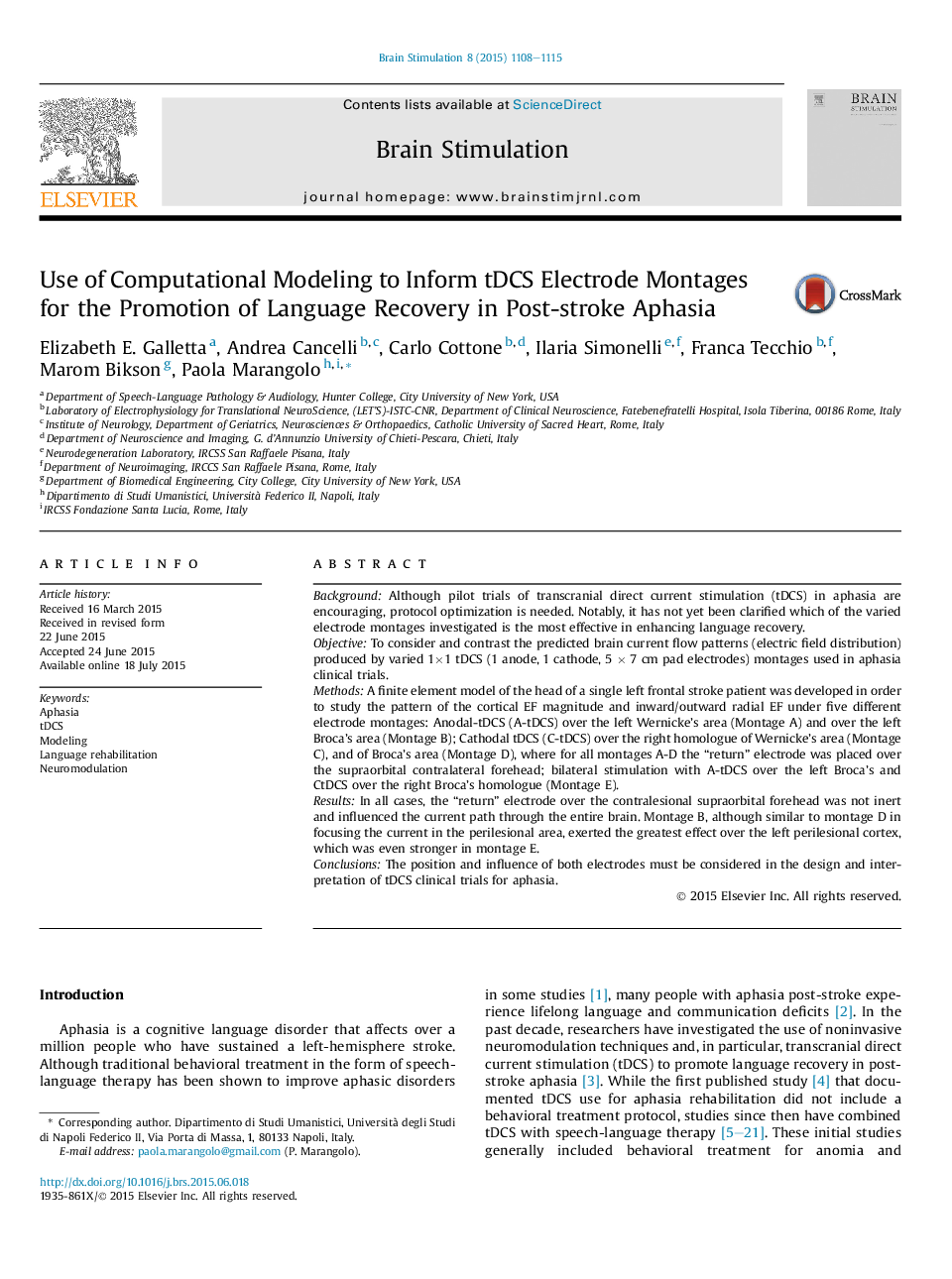| کد مقاله | کد نشریه | سال انتشار | مقاله انگلیسی | نسخه تمام متن |
|---|---|---|---|---|
| 6005485 | 1184665 | 2015 | 8 صفحه PDF | دانلود رایگان |

- we wondered which electrode montage is the most effective in aphasia tDCS studies.
- the five montages most frequently used in the already published papers were selected.
- For each montage, its corresponding brain current flow patterns was analyzed.
- in all cases, we found that the reference electrode was not inert.
- the best montage to enhance language recovery in the left areas is bilateral tDCS.
BackgroundAlthough pilot trials of transcranial direct current stimulation (tDCS) in aphasia are encouraging, protocol optimization is needed. Notably, it has not yet been clarified which of the varied electrode montages investigated is the most effective in enhancing language recovery.ObjectiveTo consider and contrast the predicted brain current flow patterns (electric field distribution) produced by varied 1Ã1 tDCS (1 anode, 1 cathode, 5 Ã 7 cm pad electrodes) montages used in aphasia clinical trials.MethodsA finite element model of the head of a single left frontal stroke patient was developed in order to study the pattern of the cortical EF magnitude and inward/outward radial EF under five different electrode montages: Anodal-tDCS (A-tDCS) over the left Wernicke's area (Montage A) and over the left Broca's area (Montage B); Cathodal tDCS (C-tDCS) over the right homologue of Wernicke's area (Montage C), and of Broca's area (Montage D), where for all montages A-D the “return” electrode was placed over the supraorbital contralateral forehead; bilateral stimulation with A-tDCS over the left Broca's and CtDCS over the right Broca's homologue (Montage E).ResultsIn all cases, the “return” electrode over the contralesional supraorbital forehead was not inert and influenced the current path through the entire brain. Montage B, although similar to montage D in focusing the current in the perilesional area, exerted the greatest effect over the left perilesional cortex, which was even stronger in montage E.ConclusionsThe position and influence of both electrodes must be considered in the design and interpretation of tDCS clinical trials for aphasia.
Journal: Brain Stimulation - Volume 8, Issue 6, NovemberâDecember 2015, Pages 1108-1115